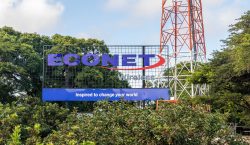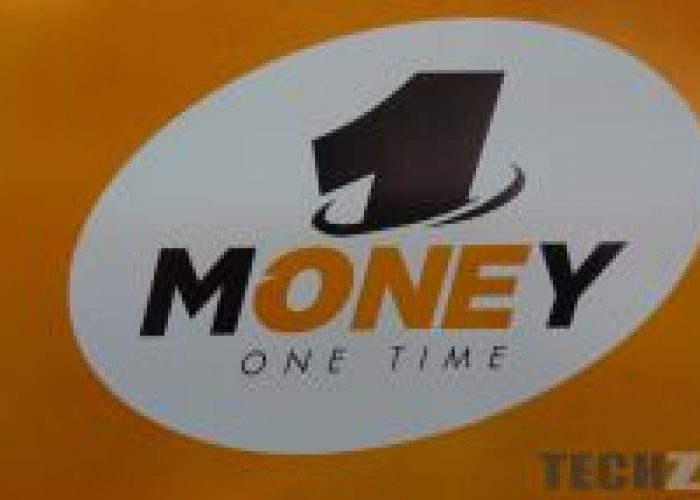



In a recent interview with Trevor Ncube, Netone’s Chief Executive Lazarus Muchenje said:
We choose to compete with ourselves and to try and be world-class because we do not believe that at this stage there is anyone world-class in this market in as far as mobile payments are concerned and I say that with a lot of respect and knowledge given that I was in this space way before the guys that are doing it here.
So I think that if we can be world-class as NetOne, we will be number one and that is going to take us 24 months to put that ecosystem in place, the people and the infrastructure in place.
Transcription by Bulawayo24
EcoCash has a lion’s share of the mobile money market, with 94.4% of the market share. Whereas Netone’s One Money and Telecel’s Telecash only have 4.8% and 0.8% market share respectively. Given EcoCash’s outsized market share, it seems kind of overambitious or unrealistic for Netone’s CEO to come up with such a target. Is it even feasible for OneMoney to overtake EcoCash in 2 years’ time?
As at June this year EcoCash had 6,643,008 mobile money users, which was 19 times more subscribers than OneMoney’s 335,132, according to POTRAZ’s second-quarter report. That means OneMoney would have to add 263 000 users per month to overtake EcoCash in 2 years’ time. Considering that from April to June (second quarter), OneMoney managed to add 22,909 users (7 600 only each month), it’s unthinkable that from this month onwards they will start to add 263 000 per month for 24 months. (I say this knowing that Netone claims to have added 70 000 users per month (divide 210 000 new users by 3 months) between July and September but I didn’t use those stats because POTRAZ hasn’t officially confirmed them since the Third Quarter Report hasn’t been issued yet).
Even EcoCash when it was most prolific in terms of adding new users in the 2015-2016 financial year, it didn’t reach a feat of adding 263 000 users per month. In the 2015-2016 financial year EcoCash managed to add 133 0000 users, according to its 2016 Econet financial statements.
EcoCash managed to get much of its users when the mobile money market was still very small, with lots of people not using any mobile money. However, now the market has grown and acquiring new users has much more to do with network effects of the mobile money provider than mouth-watering marketing strategies.
EcoCash’s strong network effects will make it hard for EcoCash users to migrate to OneMoney which has fewer users. Accordingly, it will take some extraordinary growth-hacking strategies or unimaginable incentives to force or entice 263 000 users to migrate to OneMoney per month. This altogether weighs against Lazarus Muchenje’s bold ambition and making it extremely hard to achieve. It’s not impossible but it’s hardly possible.
Even if it’s almost impossible for OneMoney to dominate the industry in two years, let’s take a look at how the mobile money provider can add more new users.
Mobile money agents are a crucial asset for mobile money providers and have been key to the growth of the industry over the last decade.
When mobile money launched a decade ago, agent distribution networks became a disruptive element in the world of financial services, particularly in developing countries where agents provided last-mile financial services….
GSMA Report-THE FUTURE OF MOBILE MONEY AGENT DISTRIBUTION NETWORKS
As you have just read, OneMoney needs to expand its distribution channels to witness growth in users. It’s important to note that both agents and retail outlets (OneMoney/Netone shops) are OneMoney’s distribution channels. Agents are the key to the adoption of mobile money as they sign up users and provides them with the necessary support services for the continued use of mobile money wallets. As I once pointed out in July when OneMoney recorded more growth than EcoCash and Telecash:
OneMoney’s growth translated into a slight increase in market share by 0.9% in the mobile money arena. The increase in both metrics is certainly attributable to the increase of its distribution channels in the form of adding 638 franchises. It makes sense because users are more willing to use a service that they know it’s support service is accessible – and franchises (which include agents) provide these support services. Widening the distribution channel is the key lever OneMoney can effectively adjust to take new users aboard. Lest we forget: a huge network of agents was the initial major reason that prompted people to start using EcoCash.
And it certainly is true that EcoCash’s exponential growth in its early years was fuelled by the rapid growth of its agents. Just some months after launching, Econet realized the need to increase distribution centers in order to entice more users. From Econet’s 2012 Financial Statements Chief Executive Douglas Mboweni said:
The business will be focusing on………increasing airtime, mobile devices, accessories, and EcoCash distribution centers and sales points.
Consequently, in 2012 EcoCash recorded a sharp increase in its user base by 62%. And this growth was underpinned by an astounding growth of its agents, which increased by 242% in 2012. From Econet’s 2013 Financial Statements Chairman of the Board Dr. J Meyers said:
EcoCash subscribers increased by 62% from 1.3 million to 2.1 million subscribers. The agency network that supports the EcoCash business witnessed a growth of 242% to close at over 3,000 agents.
Currently, there are people who are just using Netone sim cards for communication only and not for its mobile money services. This group of people is the closest and the most convenient source of new OneMoney users. Only 12.2% of Netone’s users are using OneMoney. EcoCash is being used by 77.5% of Econet users and Telecash users make up just 5,3% of Telecel users. In light of that, before talking about drawing users from other mobile money providers, OneMoney must win over 88% Netone users on its very doorstep. Only then will it make sense for them to use their powers of persuasion to fish for EcoCash and Telecash users. But the question is: how can OneMoney convert the 88% of Netone users into OneMoney users?
The astounding number of Netone users (88%) that are not on OneMoney should necessitate Netone to change its strategy when it comes registration of new subscribers. As Netone increases its user base, it should make people provide all the information that will make them join Netone’s and OneMoney simultaneously. That way, OneMoney will efficiently capture users who are within its reach as each additional Netone user will be a new OneMoney user.
Of course, merely registering users may then just result in the attainment of vanity metrics. Registered users ain’t worth much if they are not going to be active. All strategies to register more OneMoney users must be accompanied by huge demonstrations of utility. What is it that one can do with OneMoney that they can’t do with EcoCash? The more items are added to a list in answer to that question, the more registered users will be converted to active users. Already, OneMoney can receive from and send to any bank account in Zimbabwe because it is integrated to Zipit. What else can they do to differentiate themselves is an important question.
This goes hand in hand with the point above. OneMoney needs Netone (the MNO business itself) to add new users so that OneMoney can convert those users into OneMoney users. In Econet’s 2013 Econet financial statements, the telco had increased its mobile subscribers by 25% which doubtlessly contributed to the 62% increase in EcoCash subscribers. In the second quarter, Netone’s 5.2% growth in mobile subscribers was significantly ahead of other mobile money providers. If Netone continues on an upward trajectory that is far ahead of Econet, then OneMoney will get increasingly more prospective users on its doorstep.
Unfortunately, there doesn’t seem to be much that Netone can do to achieve this ambitious goal. There is however a development that would give them a fair shot: interoperability. If the regulators make it mandatory that folks should be able to send money from any wallet to any other wallet (EcoCash to OneMoney and vice versa for example) this will change the playing field a great deal. In that case, Econet’s network effects will cease to matter and OneMoney can really attempt to win the market purely on product strengths and strategy. It doesn’t seem like interoperability is happening in Zimbabwe any time soon though.
So Zimbabwe is almost a cashless economy. Sadly this is more literal than we would like, we use electronic money because there actually isn’t any cash. Of course, this is a blessing in disguise. Sadly though for OneMoeny, the fact that the economy is already cashless is a problem.
The biggest opportunity for mobile money was at the transition point from cash to cashlessness and you can see this with the fact that EcoCash’s biggest growth in absolute terms was between 2015 and 2016. This is when Zimbabweans were replacing cash that had become so elusive. The alternative that was reasonably available for them at that time was EcoCash.
It would have been more opportune for Lazarus Muchenje’s OneMoney if this transition was ahead and not behind us. Now that it is behind us, OneMoney has to migrate users from EcoCash whereas if cashlessness was still an ideal in the future they would have just fought to capture all NetOne subscribers who needed a non-cash alternative for payments. It’s unfortunate that when cashlessness was happening, Netone was visionless and visionaryless.
Perhaps there is going to be another transition back to cash in Zimbabwe? Very doubtful. If it does happen for some reason, OneMoney has to be ready with a solid agent network that facilitates cash in and cash out for the basic role of mobile money: peer to peer transfer of money.
PDF Sources
{{notice}}
If anything goes wrong, click here to enter your query.
The post OneMoney To Overtake EcoCash In 2 Years. Is It Possible? appeared first on Techzim.